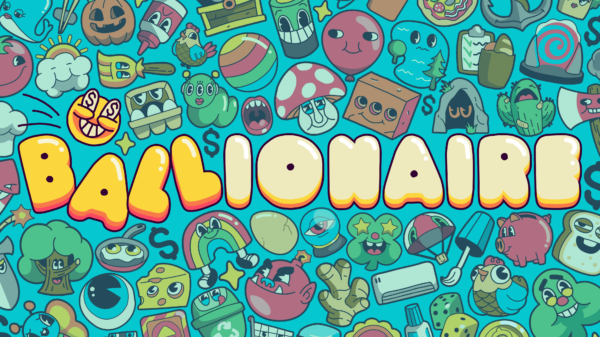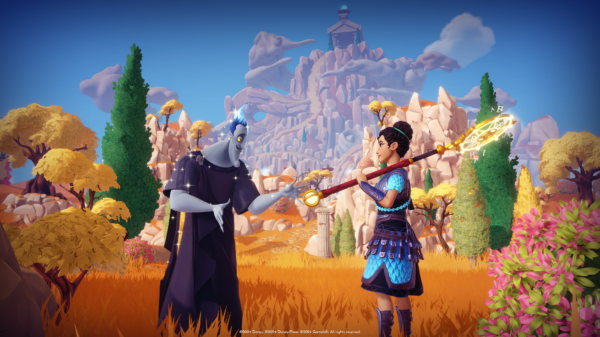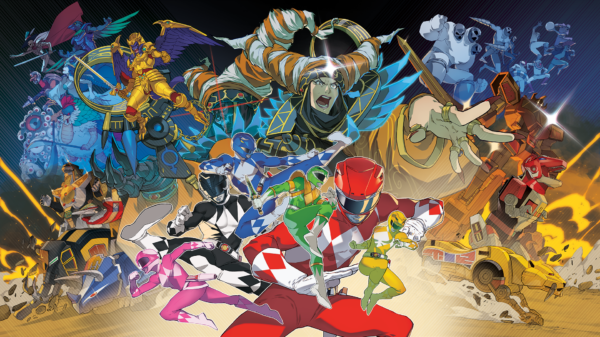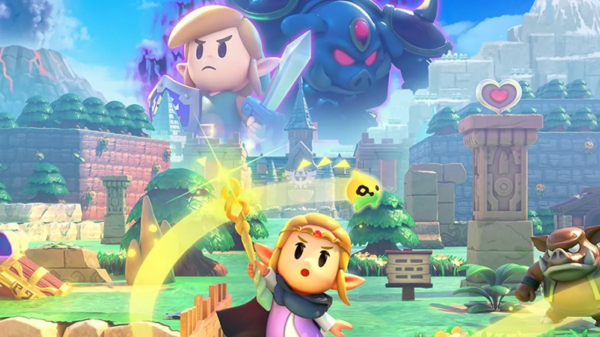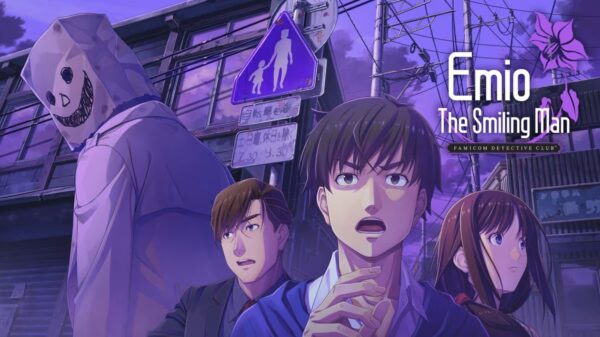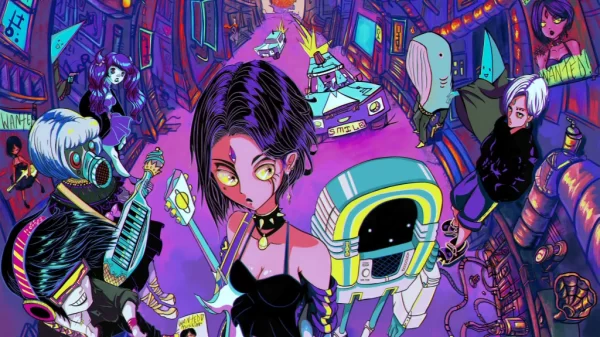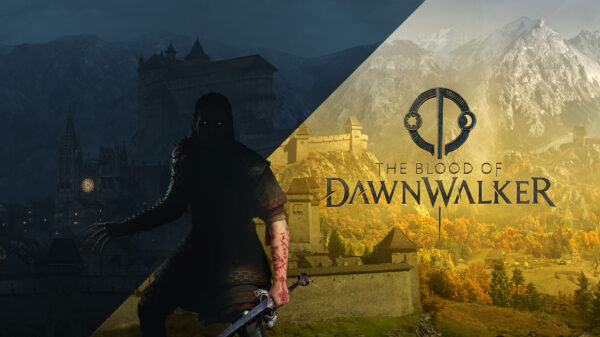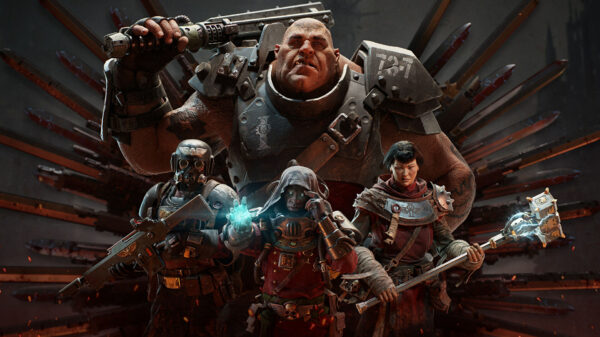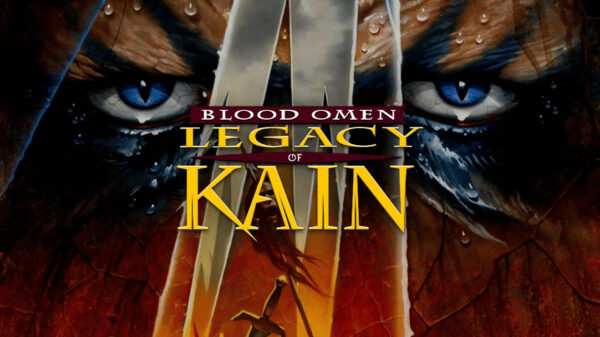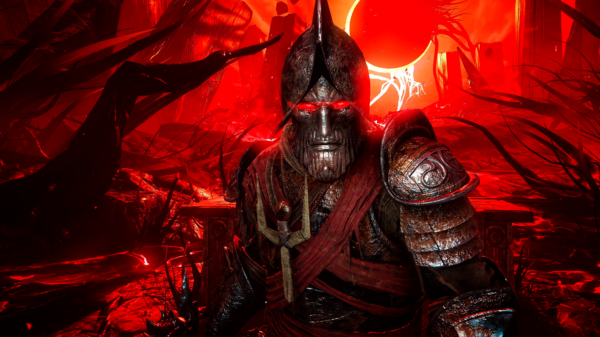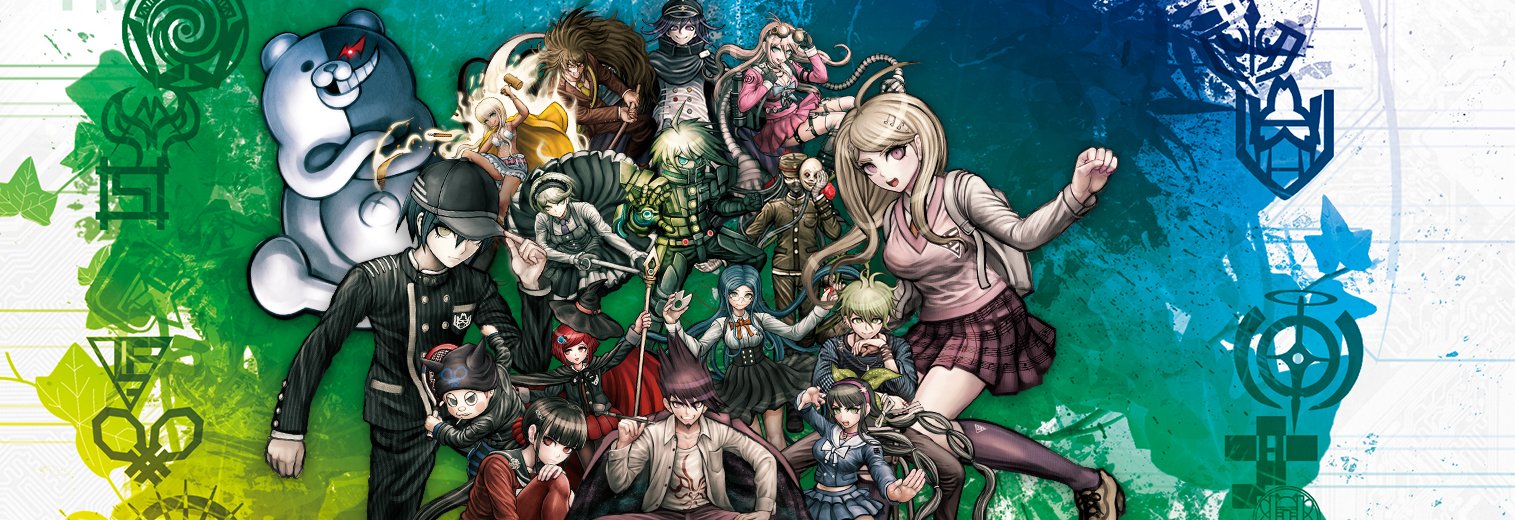Danganronpa V3: Killing Harmony is a thrilling final act to the Danganronpa trilogy. Thanks to fascinating characters that are some of the strangest in the series and gameplay additions that further improve the court segments, Danganronpa V3 is proof that a series can still thrill and surprise you three entries in.
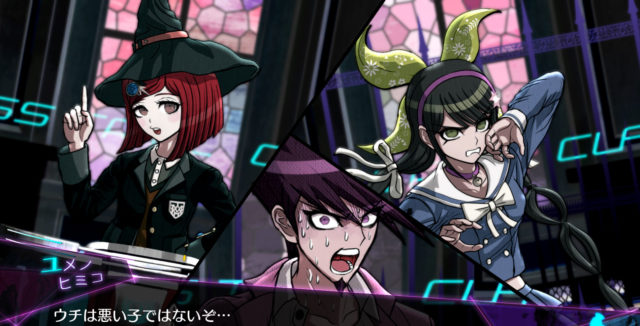
Danganronpa V3: Killing Harmony
Developer: Spike Chunsoft
Price: $69.99
Platform: PS4 (reviewed), PS Vita
MonsterVine was supplied with a PS4 code for review.
I consider Danganronpa 1 and 2 to be some of the finest story-based adventure games out there, primarily due to their two drastically different gameplay types, and their ability to balance dark sanity-bending themes with some of the most ridiculous and (successfully) misplaced humor one could imagine. This is a series where teenagers kill each other brutally to escape a horrible place, but at the same time, they’re doing it because a robotic stuffed bear who makes blatant references to anime and film is telling them too. This contrast is what makes the series so great, and Danganronpa V3 embraces this contrast more than any other title in the series.
“I guarantee that V3’s cast is at least equally as fun and interesting as previous ones.”
A new Danganronpa means a new class of “Ultimates”, students who excel in a single talent more than anyone, and a new Killing Game. As Kaede Akamatsu, the Ultimate Pianist, you lead a group of fellow Ultimates, who range from the Ultimate Cosplayer to the Ultimate Supreme Leader, to try to uncover a way to escape your dreadful situation in the Ultimate Academy for Gifted Juveniles. The Ultimate talents in V3 are more odd and fringe than in previous installments, and the characters, both in design and personality, follow suit. These are some of the weirdest characters in the series in a glorious way. Whether it’s the small, adorable, and shockingly deep-voiced Ryoma, or the ironically soft-spoken robot K1-B0 (or Keebo, as he’s nicknamed), the whole cast simultaneously fulfills and defies expectations that are associated with their clichés. While it’s too early for me to say where the cast overall stands in my own personal ranking among those of the previous games, I guarantee that V3’s cast is at least equally as fun and interesting as previous ones.
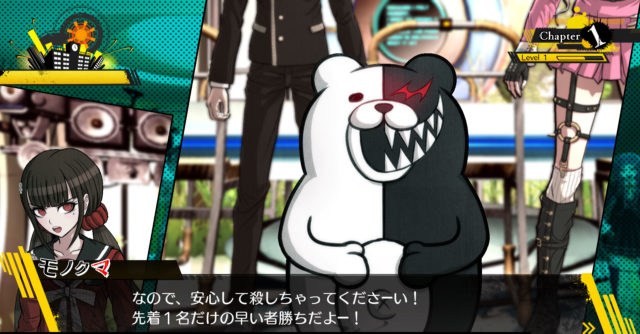
Monokuma, the murderous toy-bear and headmaster of the “school”, naturally returns, and with him some of the most absurd but ugly laughter-inducing humor in games of recent memory. In my review of 1.2 Reload, I mentioned that Monokuma was the best thing in the franchise, and that still stands. It’s astonishing to think that this mascot character who has remained identical for 3 (and a half) games in a row can still be refreshing and entertaining, especially thanks to a newly amplified sense of meta awareness. Monokuma and his “children”, the newly introduced and humorously unhinged Monokubs, constantly refer to tropes that V3 uses or entirely disregards. Whether it’s the length of a class trial or the death of a character, there’s always a biting line full of self-deprecation to compliment the story progression. It would be easy for this type of humor to be done lazily, coming off as obnoxious, but V3 avoids that as expertly as previous titles did.
Gameplay is divided into two primary segments, alongside a number of minor mini-games: free-roam and class trials. Free-roam segments are more akin to visual novels and adventure games than the more action-based courtroom segments, focusing on talking to characters and gathering items. Free-roam’s strength lies in its characters, as you get to know each one better through the main story and the optional “free-time” periods, where you can hang out with characters to learn about their backstories. As with previous games, these moments provide plenty of heart-warming and funny moments, which further serves to make the deaths of characters even more tragic. On the brighter side, environments are now able to be manipulated, thanks to the new “slap” function. It’s really minor and only serves to move things out of the foreground, but being able to smack background objects to make them comically fly off-screen is more entertaining than I’d like to admit.
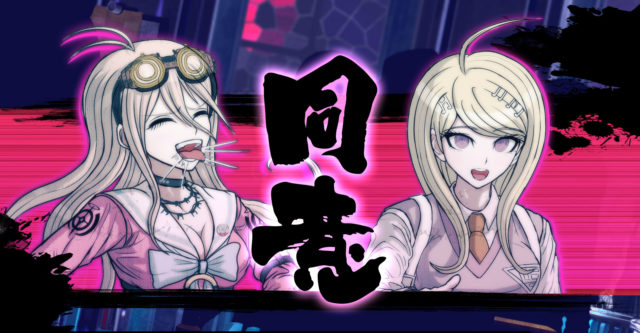
The Class Trials are where V3 shines, with trials that are as exhilarating as they are tense. After gathering evidence in free-roam mode you’re brought to the courtroom, where you and your new friends partake in verbal combat to determine whether one person dies, or the whole group. The basics of Class Trials revolve around you disproving theories made by your classmates by shooting “Truth Bullets” at their statements, embodied in large text. As the courtroom rotates in a pleasantly off-putting way, you’re kept on your toes trying to shatter enemy lies to find the truth of each case. There’s nothing that can quite match the sense of fulfillment you get when you find a contradiction and literally shatter it with your insight, a sensation that you’ll experience frequently throughout V3.
“It’s up to you to sift through this mess of arguments in order to find the truth.”
A surprising number of new features are present in V3, but the most simple and surprising one would be the “lie” segments. To spur your classmates the right way in a debate, you may have to lie to them so that they don’t get stuck on certain details. This means you’ll be firing “lie bullets” into your opponents truthful statements. There’s a clash of ethics at play whenever you have to lie to your classmates, but it adds pressure unlike anything else, and makes you think backwards in order to fool your classmates.
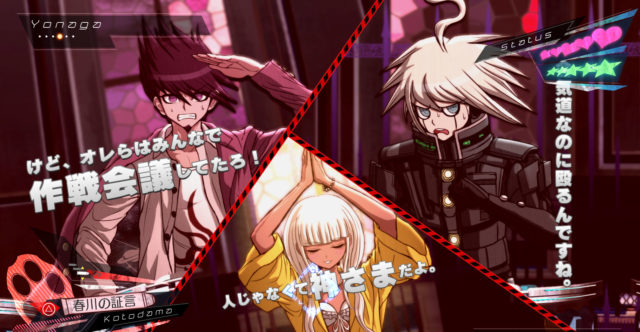
Another great feature is the Mass Panic Debate, where a number of classmates will yell over one another as they take up different parts of the screen. It’s up to you to sift through this mess of arguments in order to find the truth. This sense of hysteria adds to the already hyper atmosphere of Class Trials, and makes you feel even more accomplished when you’ve destroyed three arguments instead of just one.
The minigames are just alright for the most part, serving as more of a distraction than anything. While there’s nothing really wrong with the minigames per se, they just don’t offer too much when compared to the already exciting Class Trials. Hangman’s Gambit is fine, since it has you put together keywords for your arguments, but having a platformer, rhythm game, puzzle game, and a driving simulator all condensed into minigames feels like filler more than anything. While I understand they were shooting for more variety with these activities, they still feel largely out of place.
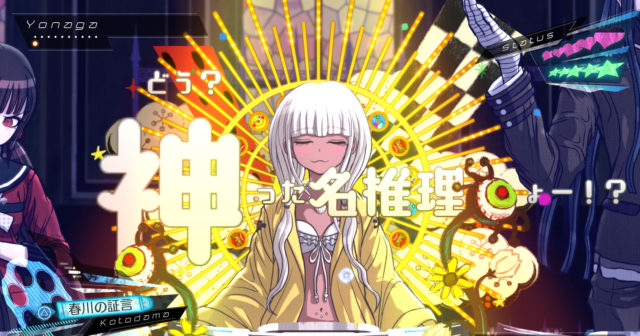
The visuals of Danganronpa V3: Killing Harmony slightly improve upon the visuals of the first two games, but there honestly isn’t a whole lot to improve. Since the series thrives off of 2D illustrations and basic 3D models, little touch-ups are the extent of what could be changed. The existing art is fantastic, mixing charming character designs with a strange foreboding feeling, a result of the colors and more rough-looking characters of V3. You will not confuse any character with another, as they’re simply too diverse and, in some cases, ridiculous to possibly mix up. This isn’t in a gaudy way though, as the dark, almost surreal designs blend with the atmosphere quite nicely. I want to make a specific note of how great the designs of the Monokubs are, poking fun at the different variations of mascots typically found in other media. The themes of each cub are over-the-top, featuring a ninja, a robot, a rock star, a bikini-clad lady, and a parody of Osaka fashion in general. It’s such a weird mix of characterizations that works together in a bizarre harmony.
“While it could almost be expected at this point, V3 has a soundtrack that effortlessly dances between melancholy and high-energy jams …”
The sound of V3 is almost flawless, boasting a soundtrack that is memorable and perfectly fitting, and stellar voice work on both the English and Japanese sides. While it could almost be expected at this point, V3 has a soundtrack that effortlessly dances between melancholy and high-energy jams that will stick in your head for a long time after you’ve beaten the game. There’s an abnormal quality to a lot of the songs that I couldn’t describe as anything other than Danganronpa music, featuring a mix of genres with gibberish words and phrases being sampled in the background. This sound fits the world of Danganronpa perfectly, thus the hastily made genre name, providing a truly unique listening experience.
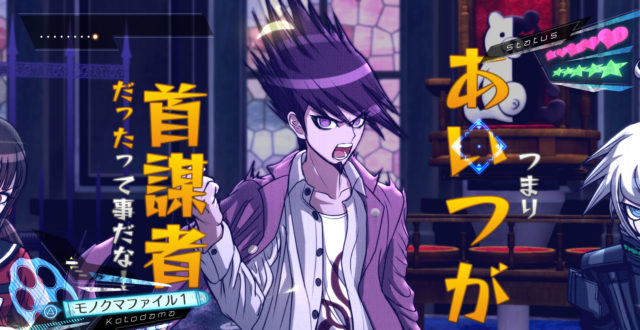
The voice work is exceptional, with each actor very clearly giving their role all they’ve got. The ominous but lazy Ultimate Magician Himiko sounds bored but slightly off-kilter, while the Ultimate Anthropologist Korekiyo has a voice that is as smooth as butter, but as intimidating as Hannibal Lecter’s. The actors and actresses bring a real sense of life to these characters, which can be difficult in a property like Danganronpa that has a great deal of focus in Japanese culture and traditions. And though it should be implied, Monokuma’s voice is still perfect, fitting of his character.
 The Final Word
The Final Word
Danganronpa V3: Killing Harmony is a more than worthy entry into the Danganronpa series. Its eccentric characters and thrilling gameplay make Killing Harmony a sadistic joy to play, while the soundtrack and voicework make it easy on the ears. I’m not necessarily saying it’s a game to kill for, but I definitely would.
– MonsterVine Rating: 5 out of 5 – Excellent

